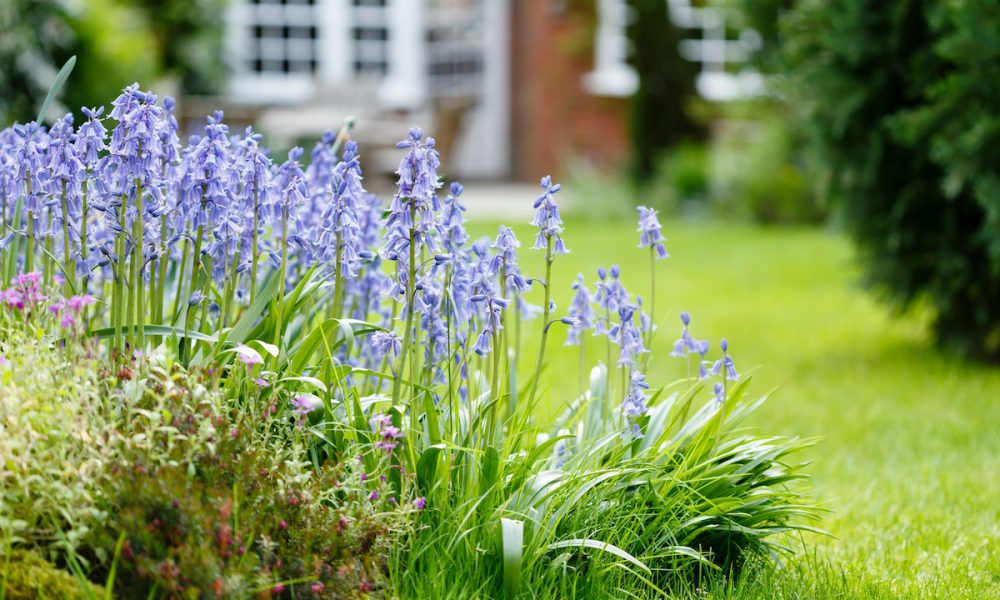
Before the start of the spring growing season, there are some chores that can increase the health and beauty of your meadow. For the most part, these tasks are limited to mowing, raking, and seeding.
Many wildflower gardeners like to scatter extra seeds, especially single-season annuals, to add more color to young meadows. The easiest and most effective way to add more seed if you have not recently mowed is to take a steel rake and rough up small areas, or “pockets,” throughout the planting site.
Many wildflower enthusiasts and nature lovers prefer to leave their plants standing throughout the winter as habitat for insects.
If you left your meadow up over the winter, spring is a fine time to mow. Directly after mowing, follow the same instructions as though you’d mowed in fall (below). we recommend combing through your planting site with a rake to remove excess plant materials. Raking away the clippings will open things up at a ground level, which allows sunlight to penetrate young perennial plants.
Maintaining Your Wildflowers Throughout the Growing Season
During the growing season itself, your meadow will actually be quite self-sufficient (especially beginning in its second year). The work you do during this time can help to reduce the growth of aggressive weeds and can also encourage your flowers to bloom more frequently.
Part of the attraction of wildflowers is their ease of care; however, when weeds begin to take over your planting (usually an outcome of skimping on-site prep work, or overseeding) it can be difficult to pull the weeds without damaging flower roots and disturbing the overall feel of your planting.
Just lean in and snip – as low down on the weed plant as you can. A few passes with your scissors every other week will greatly reduce the threat of weeds and put your wildflowers back on top as the dominant species in your meadow. This is especially effective in smaller spaces.
Have fun with this!
Bring a friend and a glass of wine so you can Snip n’ Sip your way through the wildflowers. We don’t recommend using chemical sprays, as you’ll risk accidentally spraying the plants you’d like to see growing. Further, many important pollinators and other beneficial insects are likely to get caught in the crossfire.
Keeping Your Wildflowers Looking Fresh All Season
Deadheading, removing flower heads that have died, is actually wonderful for your plants.
This helps to keep your plants looking fresh and healthy throughout the season. Additionally, when you cut back dead and dying flowers, you’re sending a signal to the plant that it should focus its energy on producing even more blooms.
The Best Time to Mow Down Your Wildflowers
A hard frost signals the end of the season for many flowers, but there is no one perfect time to mow your wildflower meadow.
Many gardeners will mow once a year. Wait until late fall, until all your flowers have ripened and dropped their seeds. Then with a weed trimmer or your mower set on a high setting, mow the whole area. (This can be accomplished with a mower, brush hog, or even a weed wacker.
This way, it will be primed to come up green and new the following spring. In spring, rake the clippings and debris away then to open up the ground to some much-needed sunlight. You may prefer to leave your meadow standing as important habitat for local wildlife and pollinators. In this case, you can adopt a looser mowing schedule.
Others mow 1/3 of their meadows every third year so that each section is only trimmed back every nine years. The important bit to remember is that not mowing at all will lead to natural succession. Eventually, tree and brush seedlings will creep into any open field over time and could take over, so we recommend a mowing routine of your choosing to help maintain your wildflower meadow.
How Wildflowers Help Your Landscaping and Property
Once established, wildflowers enhance the attractiveness of your landscape, help control erosion, furnish food and cover for wildlife, and provide maximum enjoyment with minimal care. The plantings can be as small as a few square feet of the border around the vegetable garden or individual trees, or as large as several acres.
Many landowners are saving money and labor by converting their high-maintenance lawns to wildflower plantings. Key factors when planting a wildflower meadow are careful site selection, preparation, and maintenance. This can include choosing plants that are suited to the soil, picking the right method and time of installation, controlling weeds before and after planting, and managing for long-term success.
For wildflowers needing direct sunlight, the location should receive a minimum of eight hours per day. Also, be sure to pick a location for maximum viewing pleasure. In sites with less sunlight, such as wooded areas, you should look for plants that are tolerant of shade. Knowing your soil type is essential for the successful establishment of wildflowers.
Soil moisture is equally important in deciding what wildflower species to plant. Moist soils have a generous amount of water in the subsoil throughout the growing season. Clues are periods of standing water in spring and fall. Dry soils include sandy and gravelly soils that drain readily and never have standing water, even after heavy rain.
Looking for further control over your landscaping? Let Houseman Services take a look and help you out! Contact us now!